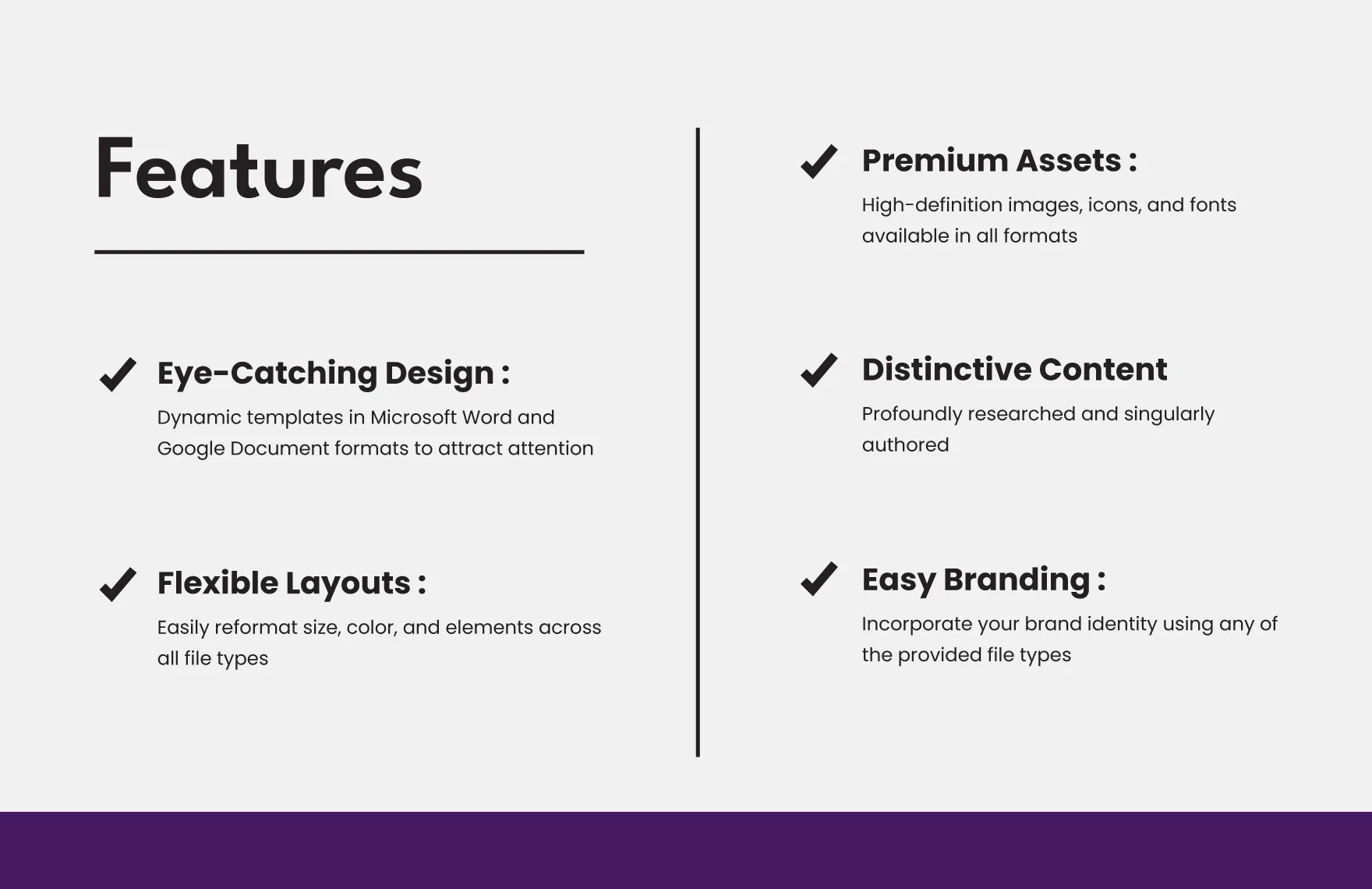Crafting the Perfect Cover Letter
A cover letter is your first chance to make a strong impression on a potential employer. It’s a crucial part of your job application package, offering a glimpse into your personality, skills, and enthusiasm. A well-crafted cover letter can significantly increase your chances of landing an interview. This guide will walk you through creating a compelling cover letter template that will help you get hired fast. Think of it as your personal introduction, setting the stage for your resume and highlighting why you’re the perfect fit for the role.
Understanding the Importance of a Cover Letter
Many job seekers underestimate the importance of a cover letter, but it’s often the deciding factor between getting an interview and being overlooked. It provides an opportunity to connect with the hiring manager on a personal level and explain how your skills and experiences align with the job requirements. While your resume lists your qualifications, your cover letter provides the context, explaining why you’re the best candidate and what you can bring to the table. It’s where you showcase your communication skills and demonstrate your genuine interest in the position and the company. A great cover letter can distinguish you from other applicants.
Why a Cover Letter Matters
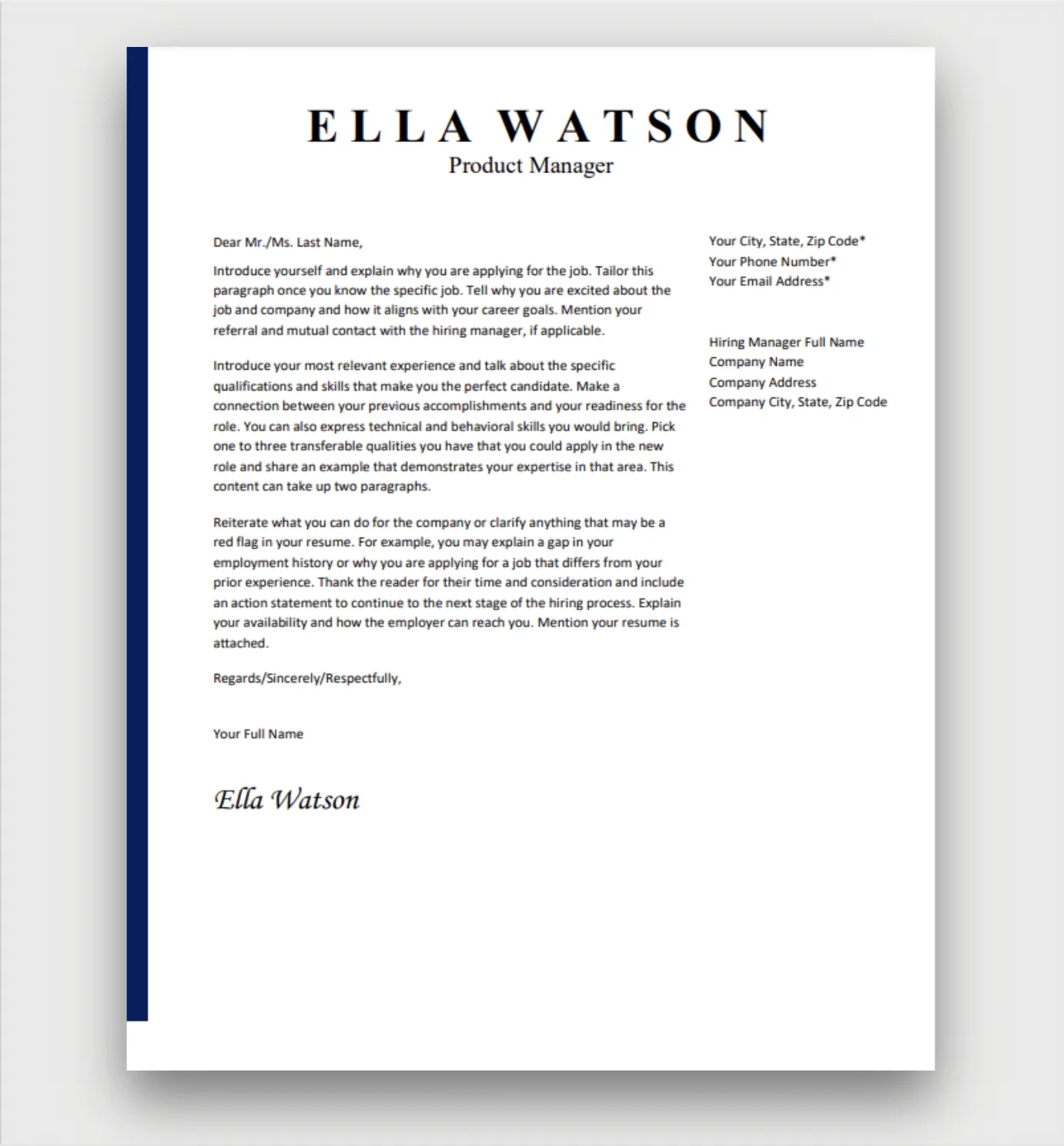
A cover letter offers a valuable chance to explain gaps in your resume, address any concerns the hiring manager might have, and showcase your personality. It’s a chance to make your application memorable. It allows you to show how your skills and experiences align with the company’s values and goals. It allows you to expand on specific accomplishments and demonstrate how you’ve made a difference in past roles. It’s a key element of your job application that should not be skipped.
The Role of a Cover Letter in the Hiring Process
Hiring managers use cover letters to assess your writing skills, attention to detail, and understanding of the job requirements. It’s often the first thing they read, setting the tone for your application. It helps them quickly determine if you’re a strong candidate and warrants further consideration. In some cases, it’s used to weed out applicants who may not be a good fit. It provides insight into your personality and communication style, which are vital for many roles. It can highlight what makes you unique and how you can contribute to the team.
Key Components of a Cover Letter
A well-structured cover letter template typically includes several key components that work together to present you in the best possible light. Each section plays a vital role in conveying your qualifications, enthusiasm, and suitability for the role. Understanding these components ensures your letter is complete, professional, and persuasive, capturing the attention of the hiring manager and motivating them to learn more about you. Creating a template will save you time and energy on each application.
Header Information
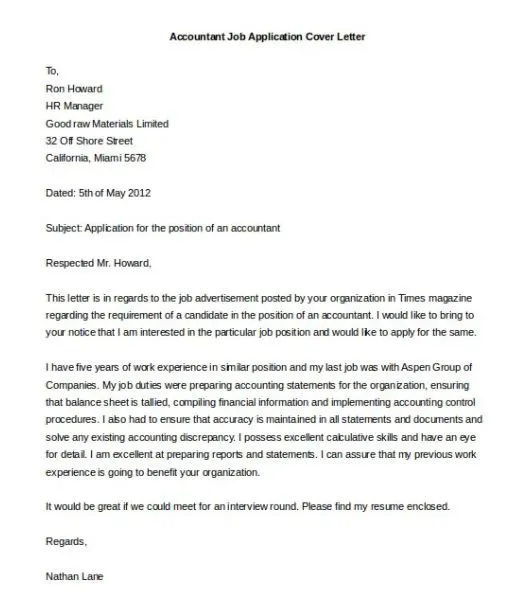
Your header should include your contact information, the date, and the hiring manager’s contact information. This ensures the employer knows how to reach you and shows that you’ve researched the company. Accuracy and professionalism are key here. The header sets the tone for your letter, so make sure it’s clean, easy to read, and correctly formatted. Proper formatting in your header adds to your credibility and makes a positive impression. Make sure to update the header with each new application.
Your Contact Information
At the top of your letter, include your full name, phone number, email address, and optionally, your LinkedIn profile URL. Use a professional email address. Ensure your contact information is up-to-date and easily accessible. Double-check for any typos. This section is vital as it allows employers to contact you for an interview. Keep this information consistent across your resume and cover letter.
Date
Include the date you are sending the cover letter. This helps the employer know when the application was submitted. Make sure to use the correct format for the date (e.g., Month Day, Year). This simple detail adds to the professionalism of your application. Ensure the date is current, as it is a subtle but important detail that shows you’re actively seeking employment.
Hiring Manager’s Contact Information
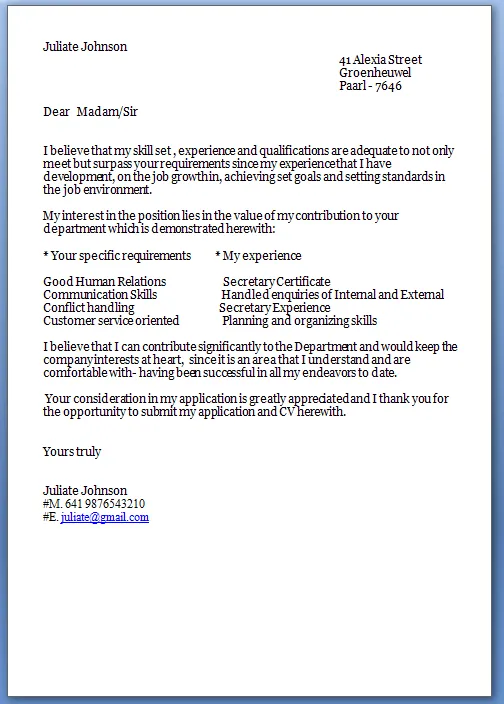
If possible, address your cover letter to a specific person. Research the hiring manager’s name and title. Include their name, title, company, and address. Addressing the letter to a specific person shows that you’ve done your research and that you’re genuinely interested in the position. This demonstrates initiative and attention to detail. If you can’t find the hiring manager’s name, use a professional greeting like “Dear Hiring Manager”.
Salutation
The salutation is the opening greeting of your cover letter. Choose a professional and appropriate greeting. If you know the hiring manager’s name, use “Dear Mr./Ms./Mx. [Last Name].” If you don’t know the name, use “Dear Hiring Manager” or “Dear [Department Name] Hiring Team.” The salutation sets the tone for the rest of the letter. Use correct grammar and spelling. A well-chosen salutation shows respect and sets a positive first impression.
How to Address the Hiring Manager
Using the hiring manager’s name is always preferable. Research their name on LinkedIn or the company website. Use the correct title (Mr., Ms., Dr., etc.) and last name. If you are unsure of the hiring manager’s gender or prefer not to assume, use “Mx.” as a gender-neutral title. If you cannot find a specific name, using “Dear Hiring Manager” is a safe and professional alternative. Always maintain a respectful and formal tone in the salutation.
Body Paragraphs
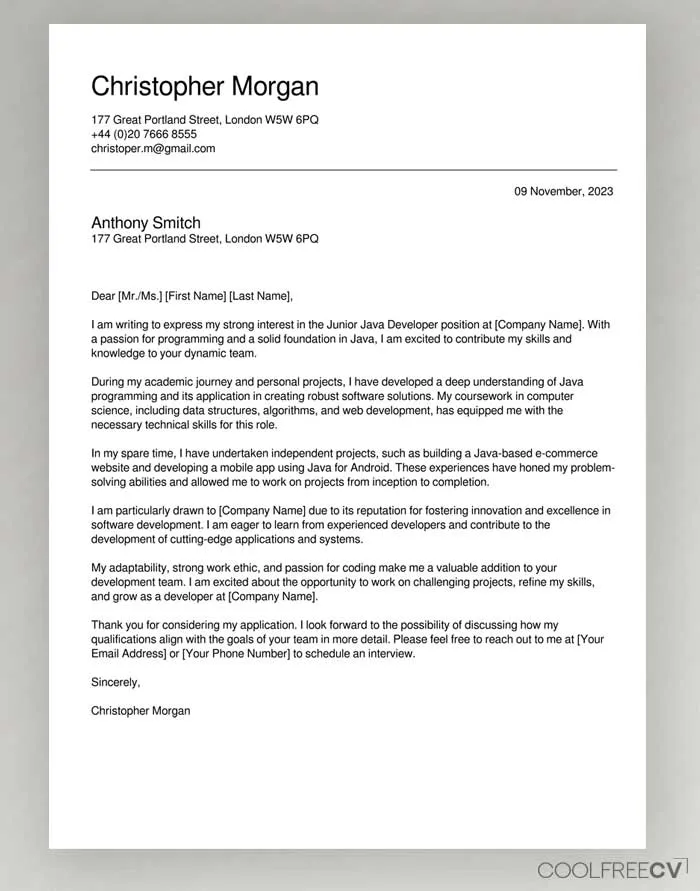
The body of your cover letter is where you showcase your skills, experience, and enthusiasm for the job. Each paragraph should have a specific purpose and contribute to the overall goal of persuading the hiring manager to invite you for an interview. Well-structured body paragraphs will make a difference. It’s the meat of your letter, so make sure to make a compelling argument.
First Paragraph Grabbing Their Attention
Start with a strong opening that immediately grabs the hiring manager’s attention. State the position you’re applying for and where you saw the job posting. Briefly mention something that sparked your interest in the company or the role. Show enthusiasm and highlight a key skill or accomplishment that aligns with the job requirements. Avoid generic openings; instead, personalize it to reflect your genuine interest. Make the reader want to read more about you and your experience.
Highlighting Your Skills and Experiences
In the subsequent paragraphs, provide specific examples of how your skills and experiences match the job requirements. Use the job description to identify the key skills and qualifications the employer is looking for. Describe how you’ve used those skills in previous roles and the results you achieved. Quantify your achievements whenever possible. Use action verbs to describe your accomplishments, showing your abilities and contributions. Tailor this to each specific job and make sure it is relevant.
Demonstrating Your Value to the Company
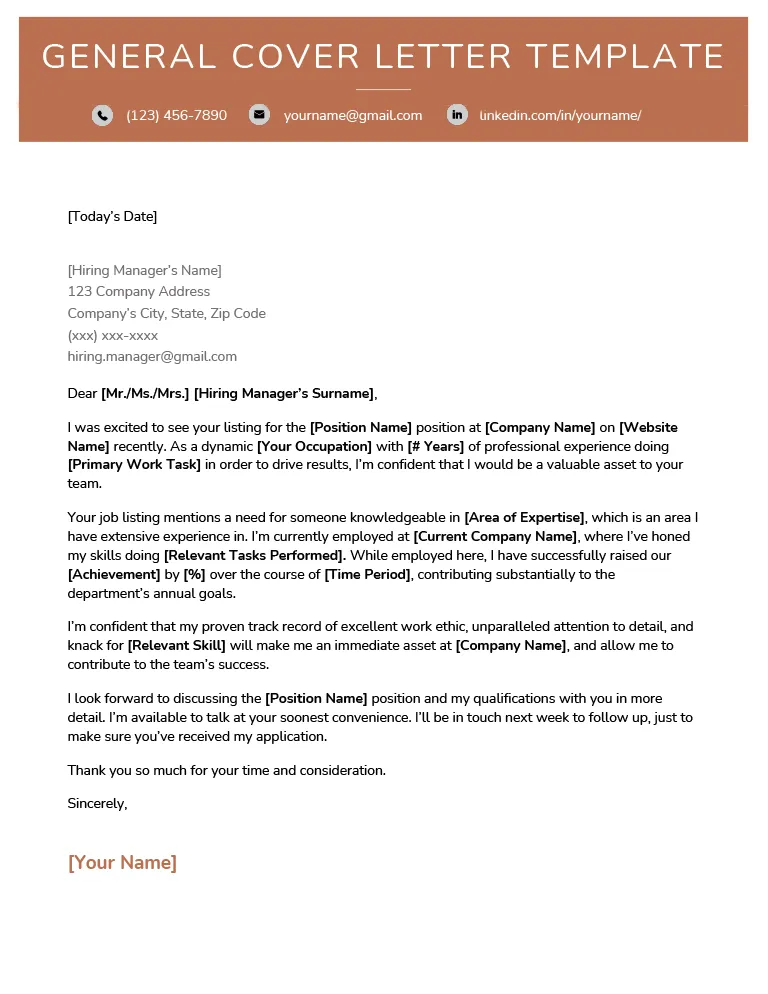
Explain how you can contribute to the company’s success. Research the company’s mission, values, and goals. Show how your skills and experiences align with their objectives. Emphasize what you can bring to the table. Make it clear why you are a good fit for the company’s culture. Demonstrate that you understand the company’s needs. Explain why you are the best candidate and how you can help the company achieve its goals.
Tailoring Your Letter to the Job
Customize your cover letter for each job you apply for. Use the job description to identify the key requirements and tailor your letter accordingly. Highlight the skills and experiences that are most relevant to the specific position. Avoid using a generic cover letter template. Research the company and mention specific aspects of their work that interest you. Make sure your cover letter shows that you understand the role and the company. Customization is the key to standing out from other candidates.
Formatting and Style
The formatting and style of your cover letter are as important as the content. A well-formatted letter shows professionalism and attention to detail. Ensure your letter is easy to read and visually appealing. Proper formatting makes it easier for the hiring manager to scan and understand the information. A clean and well-structured letter reflects well on you.
Font and Font Size
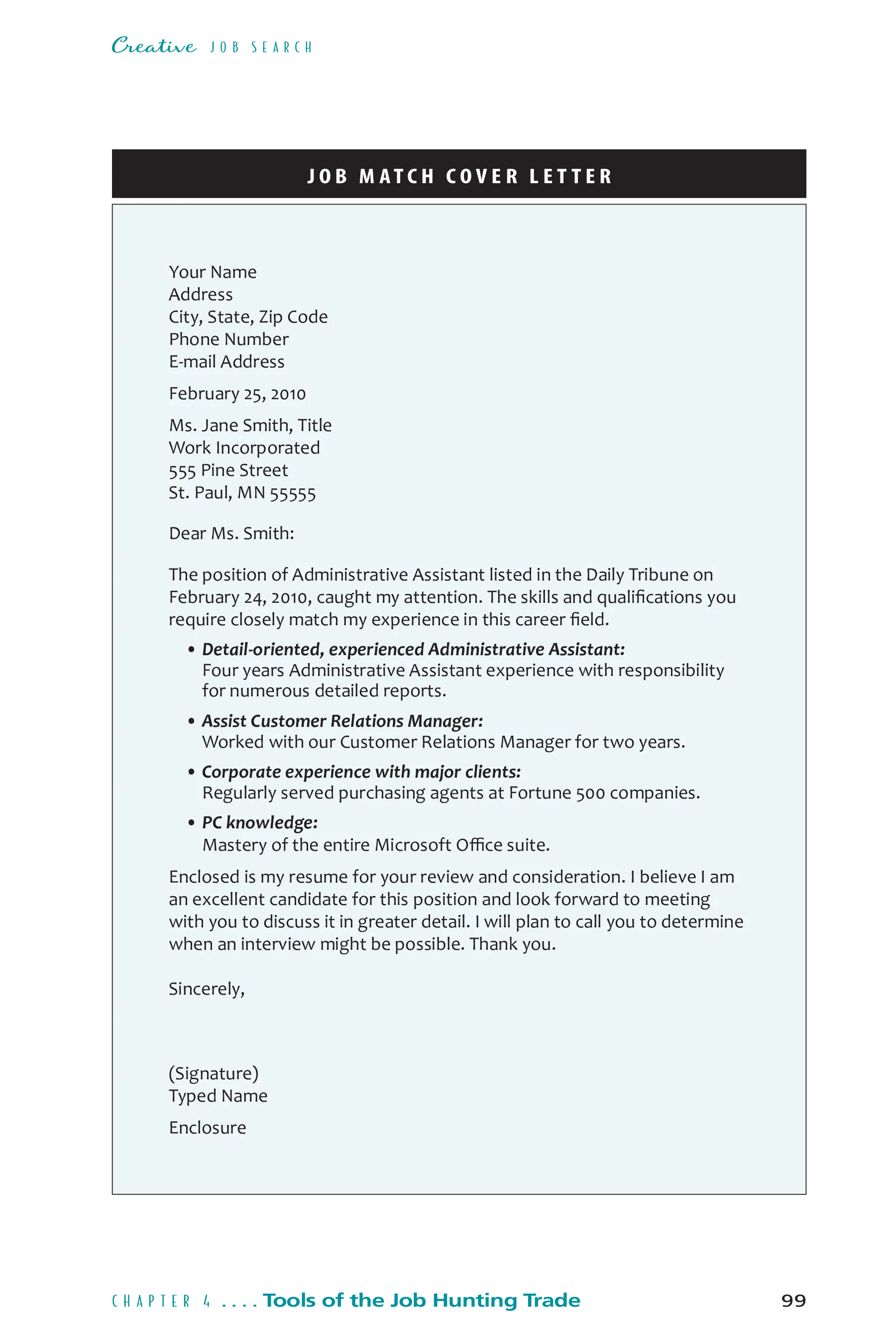
Use a professional and easy-to-read font such as Times New Roman, Arial, or Calibri. Stick to a font size between 10 and 12 points. Ensure the font is consistent throughout the letter. Avoid using fancy or overly stylized fonts that can be distracting. The goal is to make your letter easy on the eyes.
Margins and Spacing
Use 1-inch margins on all sides of your cover letter. Use single-line spacing within paragraphs and double-line spacing between paragraphs. This creates enough white space to make the letter easier to read. Ensure consistent spacing throughout the document. Proper margins and spacing contribute to the overall readability and visual appeal of your cover letter. Avoid overcrowding your letter, it has to look organized.
Proofreading and Editing
Carefully proofread and edit your cover letter for any grammar or spelling errors. Check for punctuation mistakes and ensure that your sentences flow well. Have someone else review your letter for a fresh perspective. Errors can detract from your message. Proofreading is a key step to show you have attention to detail. A polished letter makes a strong impression.
Call to Action
The call to action is the final part of your cover letter, where you express your interest in the position and encourage the hiring manager to take the next step. It’s your opportunity to end on a positive note and solidify your desire for the job. Make sure to finish with a professional tone. It’s a key part of closing the sale, making the reader want to take action.
Expressing Your Interest and Enthusiasm
Reiterate your interest in the position. Reiterate your enthusiasm for the opportunity and the company. Highlight why you’re excited about the role and what you can bring. Make a final statement that reinforces your value proposition. End on a positive note, clearly expressing your interest and eagerness to contribute.
Thanking the Reader
Thank the hiring manager for their time and consideration. Express your appreciation for the opportunity to apply. Be polite and professional in your closing. Showing gratitude leaves a positive impression. A simple thank you can go a long way in showing professionalism.
Closing and Signature
Use a professional closing such as “Sincerely,” “Best regards,” or “Yours sincerely.” Leave space for your signature if you are printing and mailing the letter. Type your full name below the closing. Signatures add a personal touch. Ensure you sign with the same name as on your resume. The closing is a final display of professionalism.
In conclusion, a well-crafted cover letter is a critical component of any job application. By using a solid cover letter template, you can get hired fast. A good cover letter highlights your skills, experiences, and enthusiasm for the role and the company. By following the steps outlined in this guide, you can create a compelling cover letter that will impress hiring managers and increase your chances of landing an interview. Remember to tailor your letter to each specific job and always proofread for any errors. Good luck with your job search!
